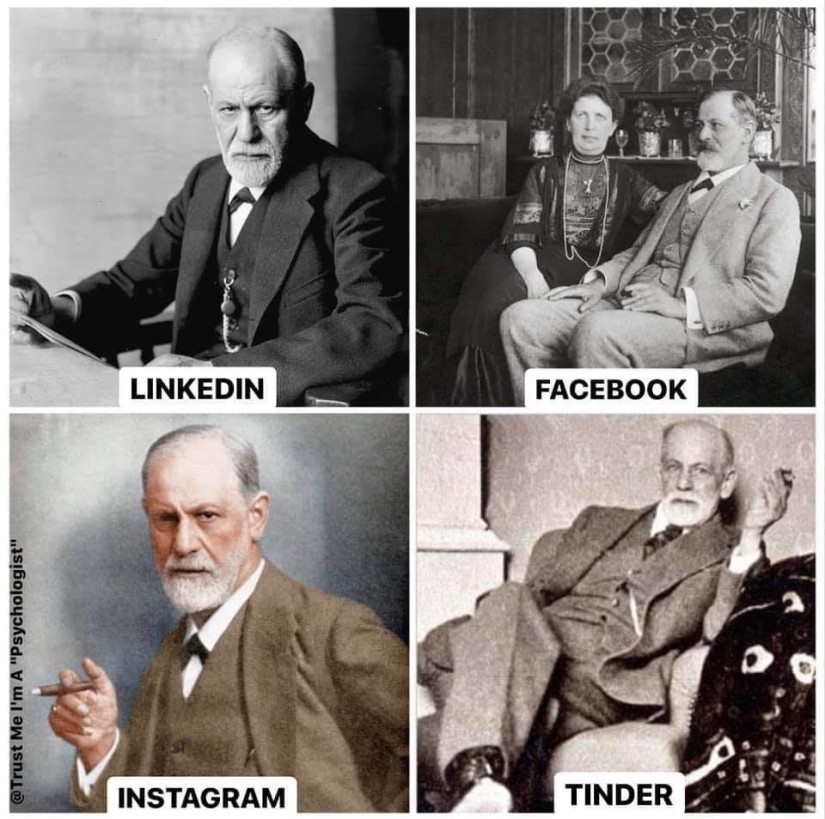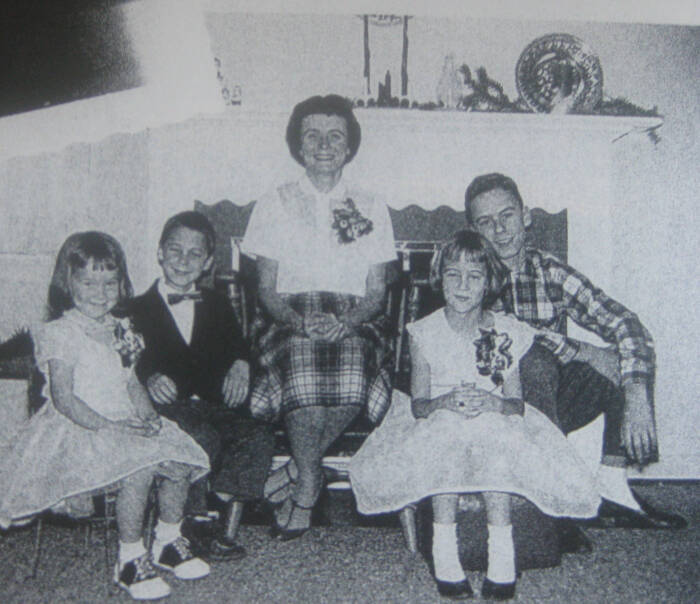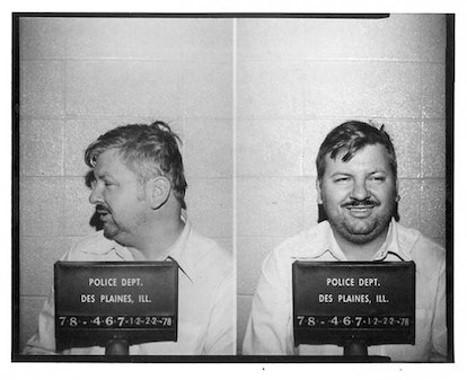Psychological Explanation: Differential Association Theory
This is the idea that criminal behaviour is learned through association and interaction with different people.
Learning criminal attitudes and behaviour:
Sutherland (1924) believed that it was possible to measure crime in a scientific way by identifying specific conditions that lead to crime, and also that if these specific conditions were not present, you would not turn to crime. Sutherland argues that if an individual is socialised with more pro-crime values (praising or highlighting the positives of crime), compared to anti-crime attitudes (criticising and highlighting the negative consequences of crime), they will go on to offend. Differential association theory suggests that it is possible to predict the likelihood of an individual committing a crime by identifying the frequency, intensity and duration of exposure to deviant, pro-crime values.
Not only can offender behaviour be learnt through observation and imitation of pro-criminal attitudes but also through imitation of specific techniques and skills. These might include how to break into someone’s house through a locked window or how to disable a car alarm. Sutherland also believed that criminal acts could be learned through observation and imitation which could explain why certain crimes tend to expand in certain areas and communities. It may also explain why so many criminals re-offend once released from prison, as they could have learned through their criminal peers.
In a nutshell, when describing Differential Association Theory. You should focus on the following three things:
- Pro-crime attitudes outweigh anti-crime attitudes
- Learning criminal techniques from role models
- Positive reinforcement – could be through physical rewards or social approval
Akers (1979) tested differential association and looked at what the most important factors in determining why some teenagers abuse alcohol and marijuana, and why some don’t. Questionnaires were used to collect data on differential association influences.

- Results found that differential association theory (i.e. the theory that other individuals influenced behaviour in general) accounted for 68% in marijuana taking behaviour, and 55% in drinking behaviour.
- Two main factors which appeared to be significantly correlated with drinking and marijuana behaviour were differential peer association e.g. they had ‘ best friends, friends with whom they associate most often, and friends whom they have known for the longest time using the substance.
- Imitation index e.g. they had “admired” models (parents, friends, other adults) who they reported having observed using the substance.
This study provides great support for Social Learning Theory as it suggests that there is a relationship between individuals turn to crime and imitating role models i.e. learning by copying people they look up to and therefore wish to share similar behaviours. However, more research is needed in order to establish cause and effect between drug and alcohol abuse and differential association as this study was a correlation.
Farrington (2006) conducted a longitudinal study of the development of offending and anti-social behaviour in 411 males who were studied from the age of 8–50 years. They were all living in a deprived working-class inner-city area of London. It was found that 41% of the males had been convicted of at least one offence between the ages of 10 and 50. A small proportion of the participants (7%) were defined as chronic offenders as they committed half of the recorded offences in the whole study. Key risk factors were identified including family criminality, poverty, poor parenting, low school achievement and risk taking. This study therefore supported Sutherland’s differential association theory because the socialisation of the males through inappropriate role models and dysfunctional systems of reward and punishment had led to criminal behaviour.
Evaluation
Strengths:
- Supporting evidence – As outlined by the Akers study and Farrington. Longitudinal – For maximum validity, studies testing this explanation need to be longitudinal so that they can track development of criminal behaviour. For example the research by Farrington & Juby (2006) 411 boys from South London were interviewed on numerous occasions between the ages of 8-46 years. Data was collected from parents, teachers and the boy themselves. Criminal records were also checked. Results showed that 41% were convicted of at least one offence between age 10 and 50. The most important childhood risk factors that increased the likelihood of offending were – family criminality, low school attainment, poverty and poor parenting.
- Applications – Differential association was able to account for crime within all sectors of society. His theory was able to explain why certain classes or communities tend to commit similar crimes. This could make interventions more effective and targeted. May also encourage rehabilitation rather than punishment. By identifying causality of crime, interventions can be put in place to help reduce crime.
- Nurture/Usefulness – Focusing on the nurture causes makes it easier to implement change in comparison to biological explanations. It is a lot easier to put interventions in place into an individuals family and upbringing, in comparison to changing genetics – which is impossible.
Weaknesses:
- Individual differences – it fails to take individual differences into account. For example, people can change their environment to ensure it better suits their perspectives. They may also be surrounded by influences that don’t deter the value of criminal activity and decide that they do not want to live a life of crime. People are independent, individually motivated beings and this theory does not consider the influence of freewill.
- Lacks objectivity – Although Sutherland promised to provide a scientific framework for crime, it is very difficult to measure the number of pro-criminal attitudes a person has been exposed to. Sutherland was not able to provide a measure that informed us of the point in which an individual would turn to crime i.e. the trigger point. Therefore, this undermined its scientific credibility.
- Social sensitivity: This theory may lead to discrimination by creating a stereotypes that you can be perceived as a criminal through association. As Sutherland’s theory suggests that certain groups display similar crimes, it could mean that there is a danger of making assumptions that those who come from impoverished, crime-ridden backgrounds, will inevitably turn to crime.
- Reductionist – Sutherland makes the assumption that through studying behaviour we can track the frequency, intensity and duration of pro-crime exposure and therefore make predictions about criminal behaviour. This reduces down (oversimplifies) the complex interaction between behaviour and the environment not allowing for any other factors to contribute towards criminal behaviour.
- Alternative explanations- research from biological explanations can be used to demonstrate how nature can have a significant impact on the likelihood of offender behaviour. For example, in Farrington’s study, they found that a high percentage of offenders also had parents who were offenders. This same study could equally be explained by inheriting a gene from criminal parents. It may be that perhaps a more interactionist approach needs to be taken which recognises the different ways that nature and nurture can both impact on our behaviour. This might account for some of the exceptions found on both sides of the argument.
Psychological Explanation: Psychodynamic Explanations of offending
The Inadequate Superego:

The psychodynamic explanation of offending behaviour sees the Superego, the moral component of the personality as crucial in explaining criminality.
Blackburn (1993) argues that if the superego (the moral part of the personality) is inadequate, then criminality is inevitable as the Id (pleasure principle) is not properly controlled and therefore does what the hell it wants! Every urge and impulse is satisfied, and not a flying **** is given.
Blackburn developed three different types of inadequate superegos:
1) Weak Superego: There is an absence of the same sex parent in the phallic stage. This means that the child cannot identify with the same-sex parent. They would also miss out on the opportunity to identify with their same sex parent. This means that the superego is not fully formed and therefore the the superego does not punish the child through feelings of guilt. This means that the child will show criminal or immoral behaviour as the superego does not hold them back. They know the behaviour is wrong but do not feel bad about it.

Ted Bundy never knew who his father was, and was brought up by his mother. Bundy was responsible for a number of violent attacks towards young women.
2) Deviant Superego – may develop if the child internalises the morals of a criminal or deviant same-sex parent. For example, a boy raised by a criminal father, is unlikely to associate guilt with wrongdoing as they have not seen this in their own parent.

Richard Kuklinski AKA the ice man, suffered domestic abuse from his father as a child, and then inflicted the same pain onto his wife and children. Kuklinski was responsible for killing over 200 people and was famed for cutting up bodies and freezing them to confuse time of death.
3) Over-harsh Superego – may develop if the same-sex parent is overly harsh. This may mean an individual is crippled by guilt and anxiety and commits crime in order to satisfy the superego’s need for punishment. An overly harsh superego craves punishment.

John Wayne Gacy, described his father as psychotic and critical. He was constantly disappointed with him and compared him unfavourably to his sisters. When Gacy would let his father down, he would confine him to the basement. Gacy tried to reproduce that behavior with his victims. And so all these dead bodies he put in the basement was like himself being buried by his father,” he said.
Evaluation of Inadequate Superegos:
- Usefulness – Both Freud and Blackburn’s perspectives, highlight that unhealthy relationships with parents can influence whether a child turns to crime. This could be used as an intervention in preventing crime. If parents are educated with effective strategies that will help them to develop healthy relationships with their children, it could to some extent help to deter crime. In addition, if we accept that the super ego and the unconscious mind contributes to crime, then psychodynamic therapy could be used. This therapy aims to help offenders identify and address unconscious processes that may be contributing to their criminal behaviour, and to develop more adaptive coping mechanisms.
- Gender Bias – Blackburn’s theory is seen as sexist as he focuses on the Oedipus Complex and added the Electra complex as an afterthought. Freud argued that females were less moral than males. This is because males fear castration by their father for moral transgressions, whereas females only fear losing their mother’s love! However, the vast majority of criminals are male, not female, therefore this theory puts forward a controversial view that is not generalisable to the real world.
- Alternative explanations: Seeing the problem as within the person neglects the complexity of the social conditions of offending, e.g. deprivation, lack of education, poverty. Theories such as differential association theory consider these concepts, and have evidence to support e.g. Farrington and Akers. In addition, biological theories such as the impact of testosterone and the warrior gene, highlight the impact of biological factors, which Freudian theories ignore. Therefore, these alternative explanations could be seen as more credible, because they are backed by empirical evidence, where as Freudian theories, at best, could use case studies of criminals, but there is no way to determine that it is the inadequate superegos that are the cause of criminality.
- Unscientific – There is little evidence to back up Blackburn’s theory, many children grow up without a same-sex parent and the vast majority do not turn to crime. In addition, the idea of the over-harsh superego and wanting to be punished does not stand up to scrutiny; most criminals go to great lengths to avoid being caught and punished! Also, It is impossible to empirically measure the unconscious mind and therefore a lack of falsifiability. Although, I have provided some real life examples above, it cannot be proved that crimes were driven by inadequate superegos. In fact it would be more likely to suggest that upbringing or genetics played a part. Furthermore, there is no evidence to suggest children without a same-sex parent offend more.
- Social sensitivity – Blackburn’s theory portrays a blame game towards parenting. Not only this, but a problem with Freudian theories is that it is socially sensitive towards women. Freud believed that females should show less superego development and so be more vulnerable to offending compared to boys. According to Freudian theory, having not experienced castration anxiety, girls are under less pressure to identify with their mothers, so their superego, and thus their morality is not as strong as boys. This is problematic, as it paints a rather negative portrayal of women, and as a consequence, could lead to women being discriminated against. However, this theory is completely contradicted by the fact that 95% of the prison population are male. This shows that the theory does not translate to explaining crime in the real world.
- Deterministic- Similar to many of the other explanations, this theory suggests that criminal behaviours is not conducted through free will and choice, but our unconscious drives determined from birth or through upbringing. As these choices are determined unconsciously, it contradicts the way society deals with offending behaviour. As a result, this explanation could have societal implications for convicted criminals and the justice system, should be it assumed to be entirely correct and accurate.
- Nature-Nurture debate – psychodynamic theory combines innate drives (id) and effects of early experiences. This could be seen as a strength of the explanation as it tries to take an interactionist approach. This could be argued to
Psychodynamic explanation: Bowlby’s Maternal Deprivation Theory
Bowlby’s maternal deprivation theory is classed as a psychodynamic explanation because it is deep rooted in the belief that early childhood experience is the cause of future behaviour.
Bowlby believed that a failure to establish such a bond during the first few years of life (critical period 0-2 years) means the child will experience a number of damaging and irreversible consequences in later life. One characteristic which is closely linked to criminality is one of these is affectionless psychopathy, characterised by a lack of guilt, empathy and feeling for others. If an individual has affectionless psychopathy, they are likely to engage in acts of delinquency because they do not feel guilt due to the lack of empathy. They also find it difficult to develop close relationships with others, as they lack the necessary early experience to do so e.g. Insecure Internal Working Model.
Bowlby (1944) supported his claims with his own investigation of 44 juvenile thieves. He found, through interviews with the thieves and their families, that 14 of the sample he studied showed personality and behavioural characteristics that could be classified as ‘affectionless psychopathy’. Of this 14, 12 had experienced prolonged separation from their mothers during infancy (in particular, the first two years of their lives). In a non-criminal group, only two had experienced similar early separation. Bowlby concluded that the effects of maternal deprivation had caused affectionless psychopathy and delinquent behaviour among the juvenile thieves.
Evaluation of Maternal Deprivation:
- Research to oppose – Point: One issue with Bowlby’s theory is that there is research to oppose. Evidence: Lewis (1954) Replicated 44 thieves’ study with 500 young people. Those with prolonged separation from the mother did not predict delinquency or difficultly in forming relationships. Explain: This goes against maternal deprivation because it indicates that there maybe other factors that impact a child’s emotional and social development. Consequence: This reduces the credibility of the theory because it shows that maternal deprivation has been falsified and therefore suggests that there could be a superior explanation for criminal behaviour.
- Socially sensitive – Point: Although it was not Bowlby’s intention, one weakness of his theory is that it is socially sensitive. Evidence: Bowlby’s theorises that if a child experiences maternal deprivation during the critical period, this increases negative effects such as affectionless psychopathy and difficulty in forming relationships later on in life. Explain: This is socially sensitive because it targets mothers as being the cause of negative outcomes and could create a negative perception towards mothers. Consequence: Consequently, this negative perception may put pressure on mothers to stay at home with their children because this theory could make mothers feel guilty for going to work.
- Point: Bowlby failed to distinguish between privation and deprivation. Evidence & Explain: Rutter argued that children in institutions such as orphanages never had the opportunity to form attachments because of the high turn-over of staff. Rutter called this privation as opposed to the deprivation that Bowlby had assumed. Deprivation is where a child had a primary care-giver but has lost the attachment. Consequently: Because Bowlby did not differentiate between those who had experienced deprivation and privation his theory of maternal deprivation may have overestimated the links to criminal behaviour.
